Texas Flying Legends’
By Chuck Cravens
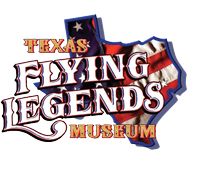
View the PDF version here…
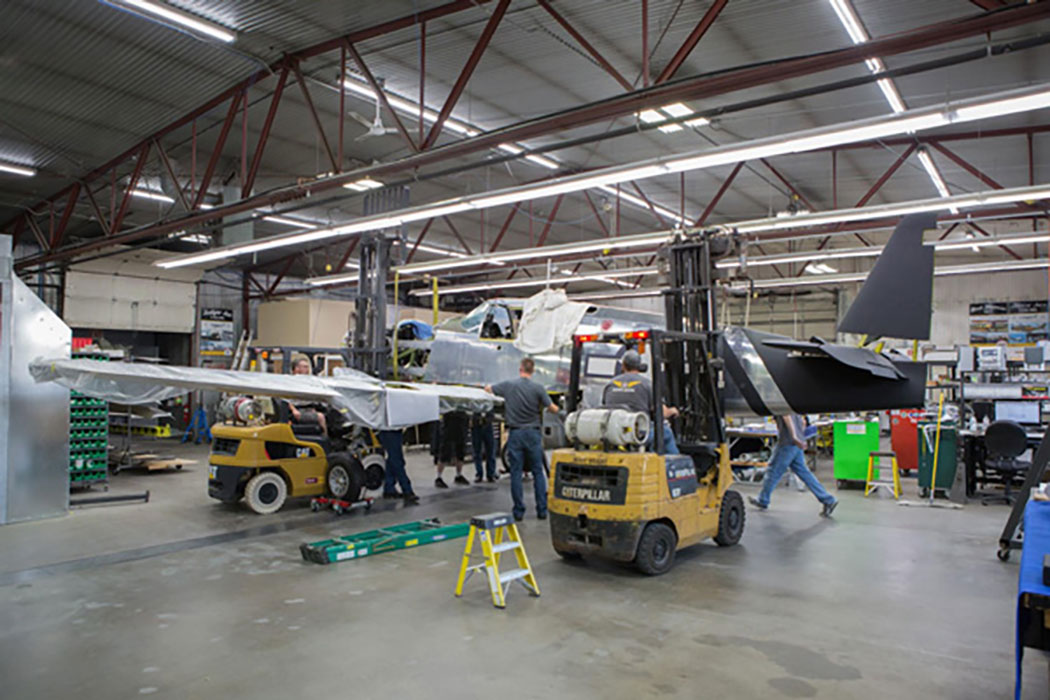
The fuselage is lowered onto the wing.
Painting the Wing
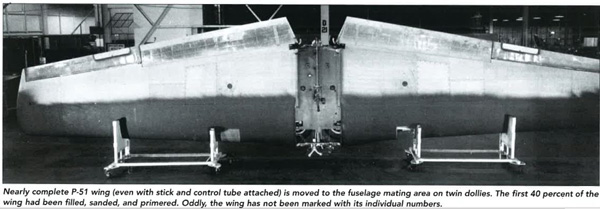
Photo from Building the P-51 Mustang – Michael O’Leary – pg 56
North American Aviation ordered camouflage paint deleted from Mustangs and all subsequent fighters and bombers in an order dated January 1, 1944. Part of the order read:
“The wing leading edge of the Mustang will be smoothed and surfaced as outlined in the P-51 B and P-51C Series Repair Manual Report No NA5741, with exception that the camouflage coats will be deleted and aluminized lacquer will be applied over the surfaces. The deletion of the camouflage will eliminate approximately 42 pounds of finish from the B-25 series Airplanes and 16 pounds of finish from the P-51 Series Airplanes. It is anticipated that the removal of the camouflage will also result in materially increased speed.”

You can see the smooth surface of the forward 40% of the wing in this shot.

Notice that fasteners show toward the trailing edge and along the masked area where the smoothing putty hasn’t been applied.
Wing Assemblies

Mark works at fitting the aileron trim tab for the right aileron.

Mark fits the aileron trim tab.
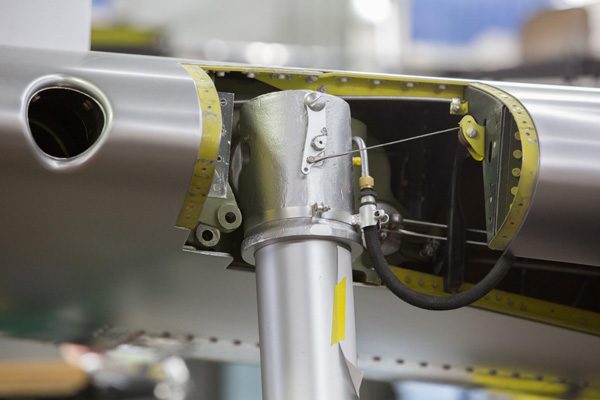
This image shows a particularly critical part on Mustangs. The pivot shaft casting is a part that is both difficult to make from scratch and a part that tends to need replacement in service. The small diameter cable attached to the gear leg is the landing gear door timing link cable. It connects the gear strut to a valve that times the sequence of the gear fairing doors throughout the retraction cycle.

The Bendix landing gear shock strut is painted silver and the green linkage is used to connect the outer gear doors to the shock strut.

Here is a tight view of the strut and linkage.

Robb works on the landing gear.

A longer view as Robb works.

The wing center section shows up well here . There are many electrical and plumbing connections to be made when it is joined to the fuselage.

The landing light on a P-51C is in the wing leading edge compared to the wheel well position of this light on a “D”.

The skin and outer window for the landing light.

The inner landing gear door is going together.

One of the 4 gun openings is shown here in close up.

Hunter fabricates a shim for the spent cartridge chute.

Green navigation light; this one is under the wing, but there is one atop the wing as well.
Fuselage Work

The Packard Merlin V1650-7 sits on its mounts with many of the accessories in place.

One of those accessories is the generator.

Another is the carburetor.

Here we have one of two magnetos, this one on the right side.

The ground strap on the oil tank is small but essential.

Cockpit heat tubes run through the floorboards.

The ignition harness on a factory fresh Mustang would be painted gray as this one is.

The exhaust stacks are in place.

This box houses the ground power plug connector.

This induction elbow connects to the carburetor.

The connector at the terminus of the wire is the generator disconnect cannon plug.

Aaron looks like he just might disappear inside Lope’s Hope 3rd!

The radio rack andfuselage fuel gauge are shown in this shot. The yellow elbow connects to the fuselage fuel tank vent. The canvas cover conceals the main power panel.

Randy is getting everything ready for joining the wing and fuselage.

The emergency manual hydraulic pump mounts on the right side of the cockpit.

Knob detail from the hand pump is prominent in this image.
The Fuselage is Mounted on the Wing
For the final time here in the restoration shop, the wing and fuselage were joined. They will come apart to truck out to our hangar at the airport once all connections and fillets are fitted. At that location, Lope’s Hope 3rd ‘s wings and fuselage will be mated permanently, everything will be connected and installed at the hangar, and it will be flight test time!

Ryan and Tye carefully lift the fuselage with forklifts.

Denzil is ready to help roll the wing into position.

Erik guides the wing.

Erik, Randy, and Chuck align the wing.

It has to be a perfect alignment before the fuselage is lowered.

The fuselage comes down slowly as Randy makes sure there are no interferences.

The fuselage is just about in place.
Decalcomania,
(or stamps, water slides, placards, stripes and other markings)

This is an inspection stamp.
 .
.
Another inspection stamp is visible on the fuselage fuel vent elbow. There are hundreds throughout the airframe on a P-51 or any warbird.

The main gear door cylinder bears an inspection stamp and another is on the main lower fuselage longeron. NAA is North American Aviation, the T on the bottom indicates Texas factory.
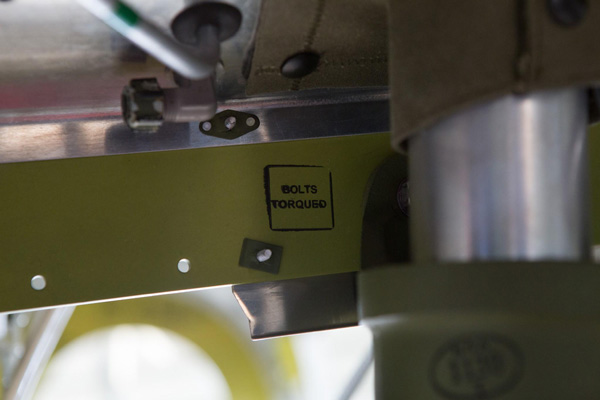
A close up allows us to read the inscription on the back of the firewall informing us that the bolts were torqued.
ANA is also North American Aviation, but is shown in the arrangement that it appears in their official corporate logo: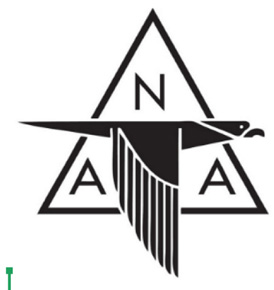
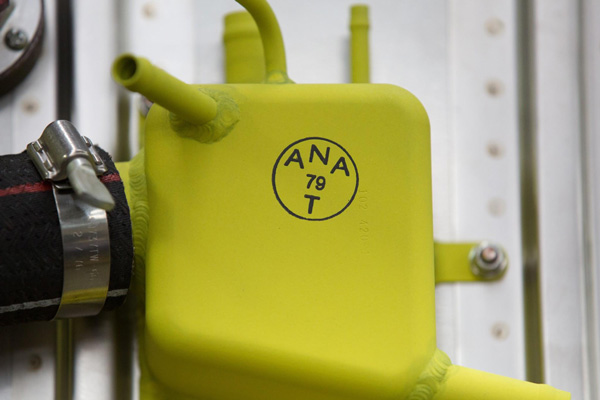

Here is a similar stamp from the rear vertical fin spar at the back of the fuselage.
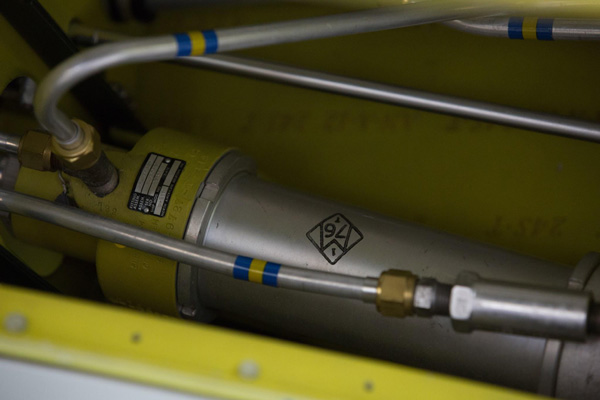
The blue-yellow- blue tape code tells crewmen that the line contains pressurized hydraulic fluid.

The red color code indicates a fuel line.
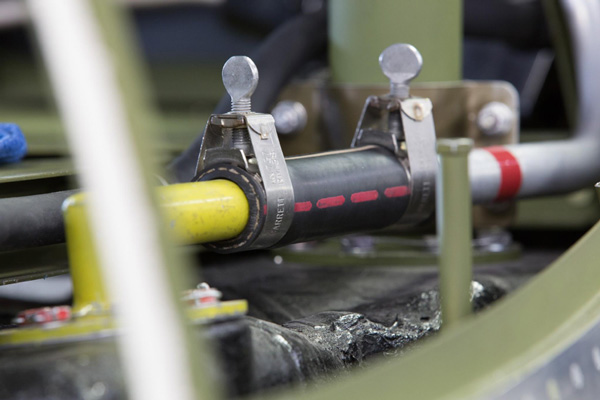
The red dashes on the rubber hose also indicate fuel.
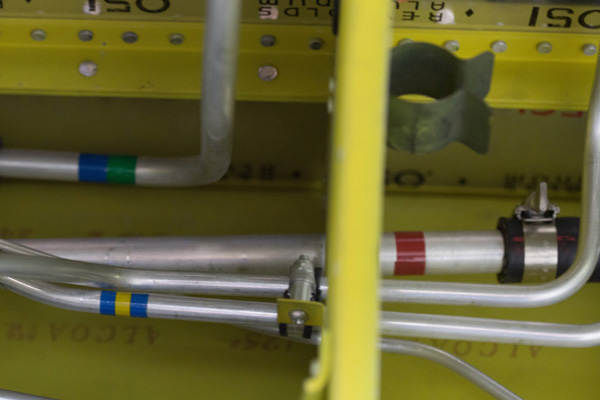
Hose and tubing marks for three different fluids show here. Red dashes on the rubber hose indicate fuel as does the red tape. Blue-yellow-blue is hydraulic oil under pressure and blue-green is air pressure, 20 lbs./sq. inch.
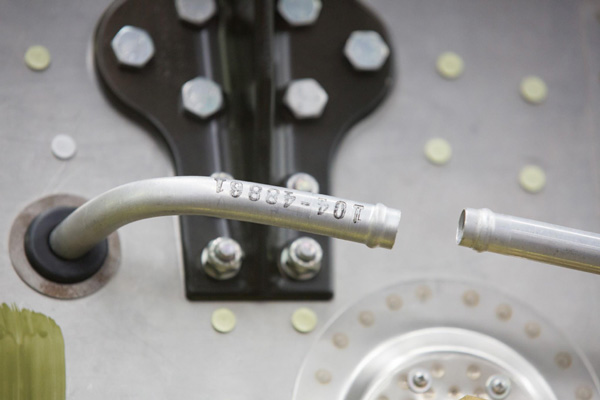
A rubber stamp was used to mark the part number on this tubing, identifying it as “ line assembly-combat- fuel pressure system right”. 104 is a part number prefix identifying a part first used on a “B” model. 103 would be “C” model, but because B and C model Mustangs for the most part differed only in which location they were built, many parts were used on both. 109-47896 is the part number of the tube assembly, front crankcase breather.
Normally we see a 109 prefix on a part number for an earlyD model. There was Tech Order TO 01-60JD-37 for C models produced before 43-24902 mandating a change in oil breather systems. 43-24902 and subsequent serial numbers (like our restoration airframe 43-24907, 5 airplanes later) got the new version on the assembly line. That explains the part number puzzle. Late Cs and early D models were often on the factory floor at the same time in 1944. It also explains why our restoration doesn’t have an oil breather hole on the right side as the original Lope’s Hope 3rd had. The TO changed from two outlets to one.
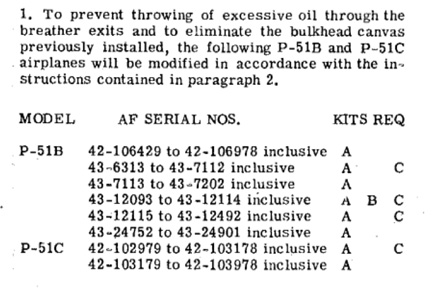
Here is a clip from TO 01-60JD-37 that shows the reason for the change and the serial numbers it applies to.
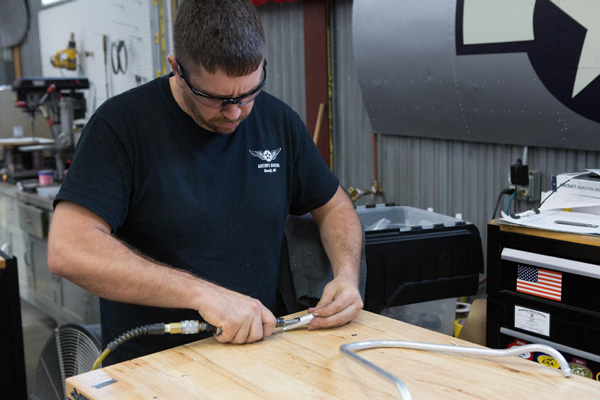
Denzil works on shaping an oil breather tube.
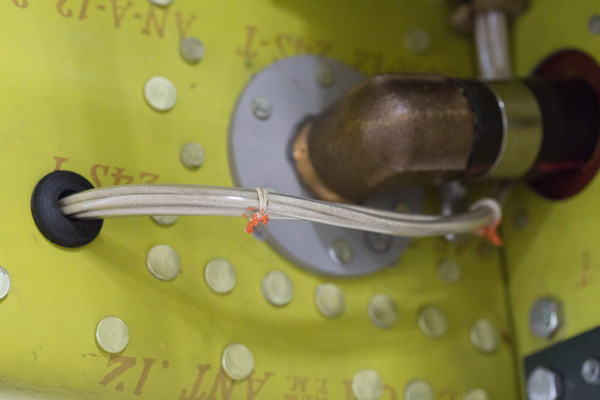
Here the fuel pump wiring harness is bound with cotton cord, the knots have orange paint applied to indicate inspection has been done and to secure them from becoming untied.
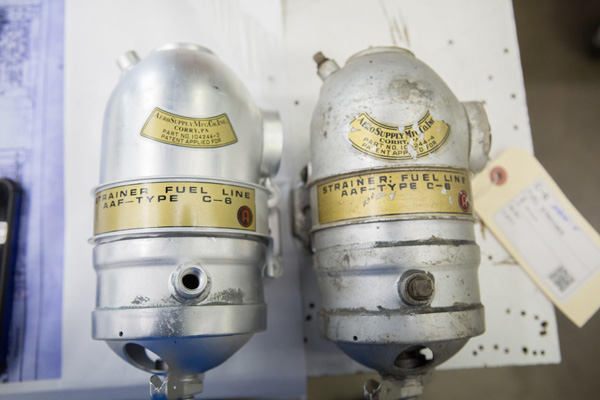
These fuel line strainers have water transfer decals as labels.
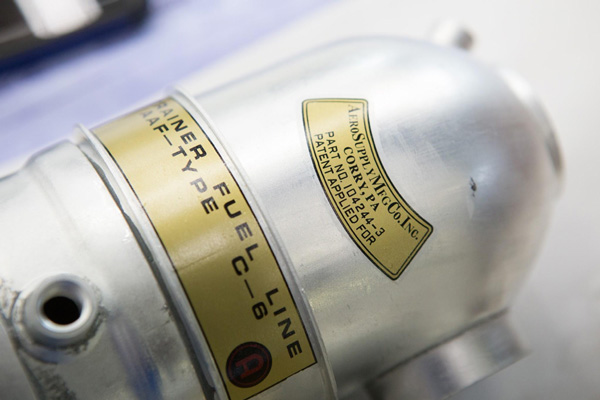
This close up allows us to read the manufacturer’s logo and other details.
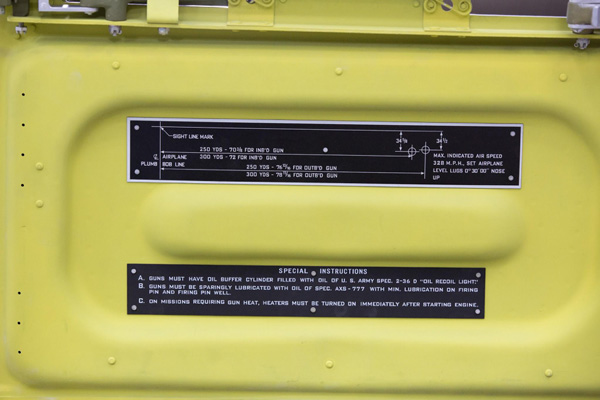
Gun sighting placards in the 4 gun C model, Lope’s Hope 3rd, are very different from the D model gun placard.
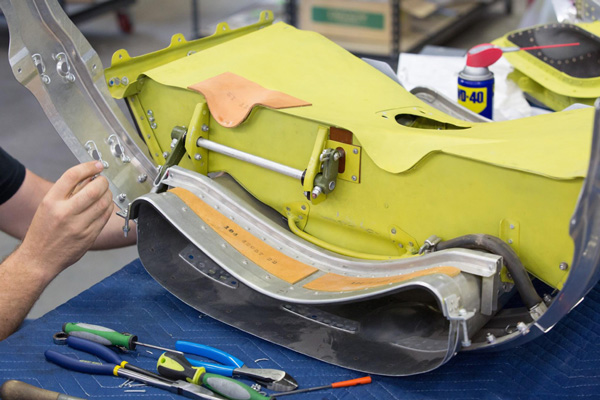
Part numbers have been stamped on the leather rub strips that cushion the intake duct where it rubs against a main cross brace, informally called the horseshoe.
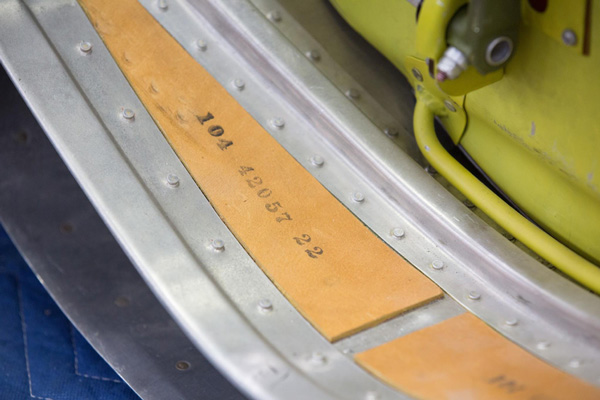
Here we can read those part numbers.
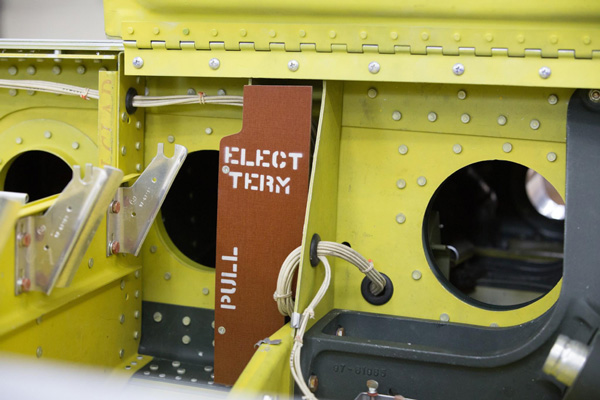
This label indicates that an electrical terminal strip is under the cover.
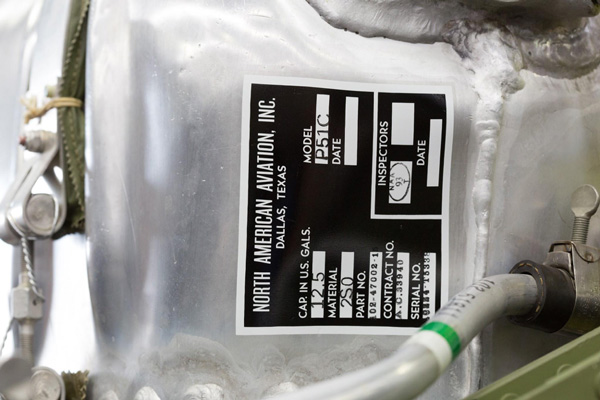
Many aluminum plates must be made or restored, this one is on the side of the oil tank.
Squadron Markings and Insignia
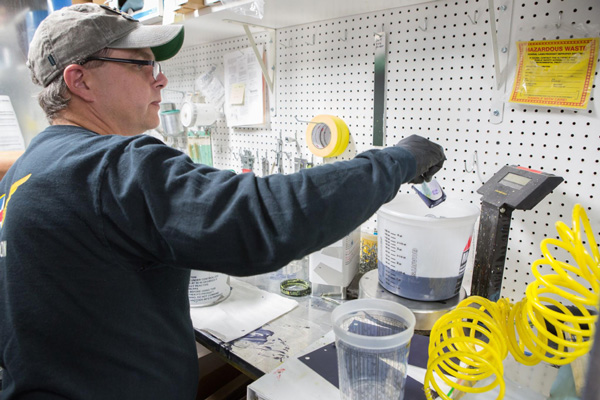
Robb carefully mixes the flat black paint for the tail section.
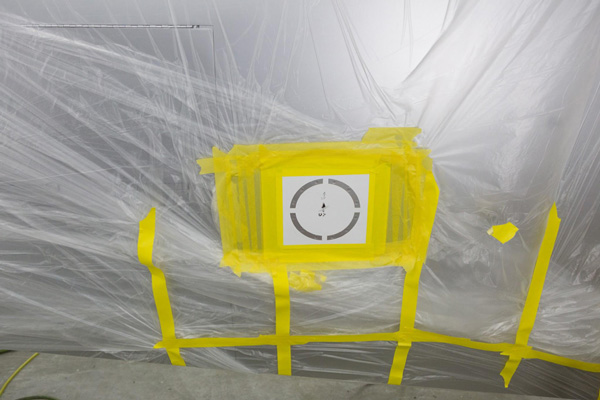
A stencil is in place to mask the red markings around a wing fuel cap.
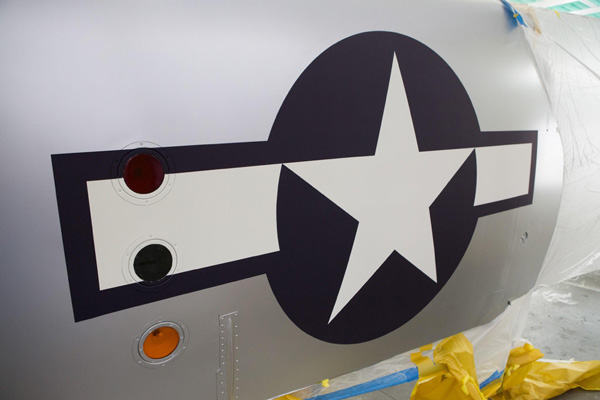
Identification lights and the star and bars shown under the right wing.
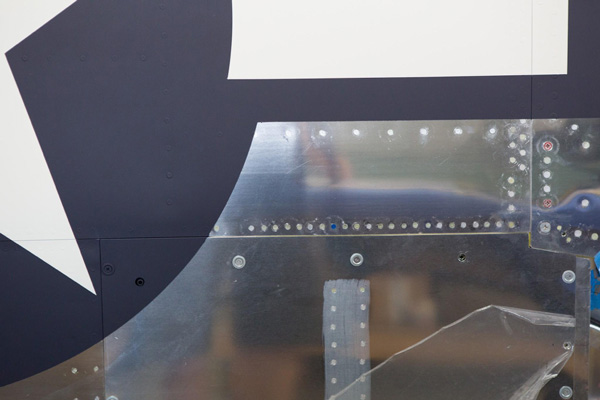
Up close we can see a variety of surface detail. Different rivet colors, dull acid wiped areas where parts were spot welded together, insignia paint, and a couple red dyed screws are all visible.
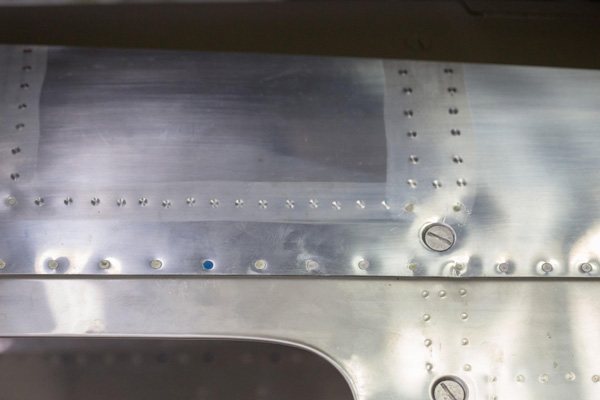
Another example of surface details shown here.
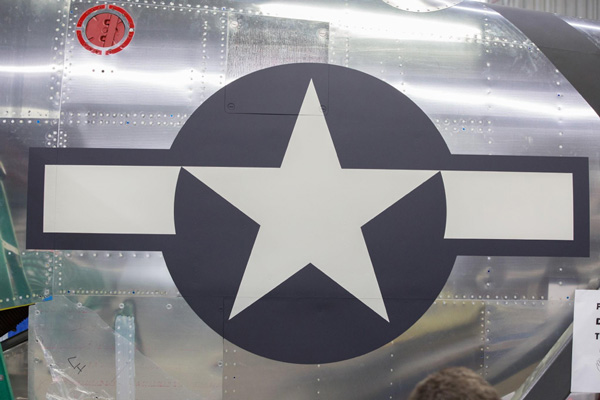
This image captures the fuselage insignia and fuel cap markings.
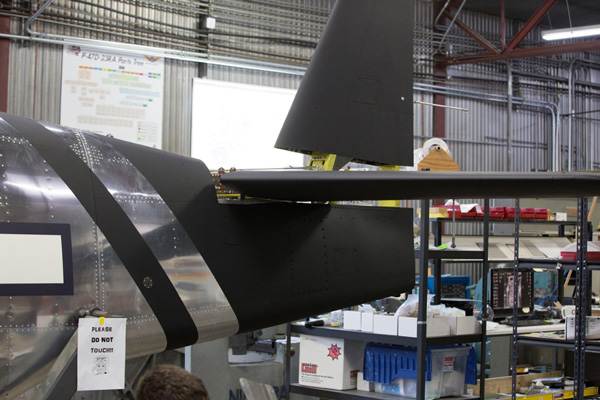
The unique flat black tail markings are on at last, identifying this Mustang as belonging to the 75th Squadron of the 23rd Fighter Group late in the war.
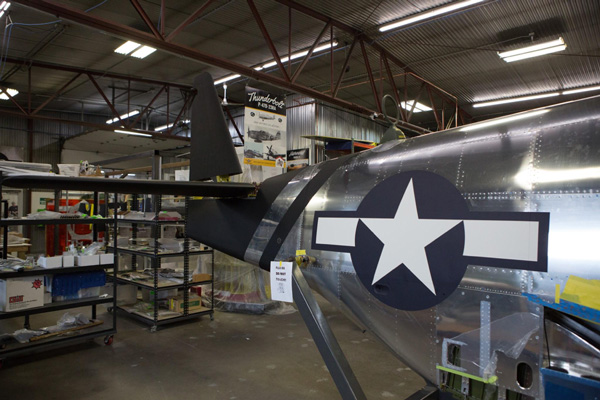
The right side appears in this image.
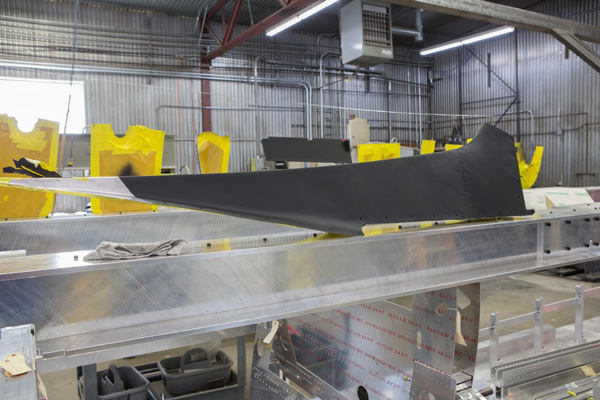
The dorsal fin isn’t on yet, but it has been painted.
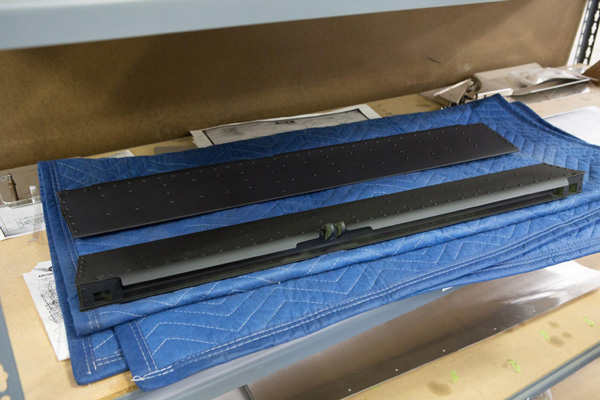
Elevator trim tabs rest on protective material.
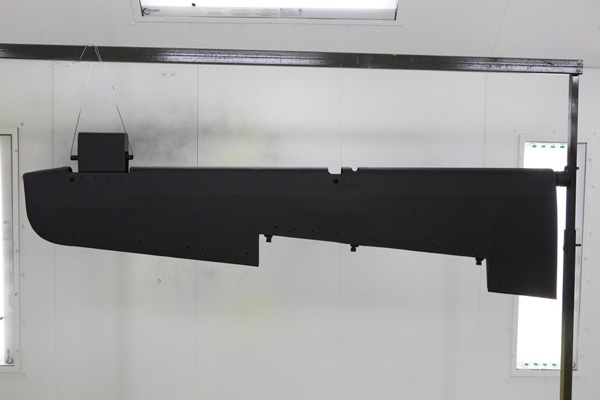
An elevator hangs in the paint booth.
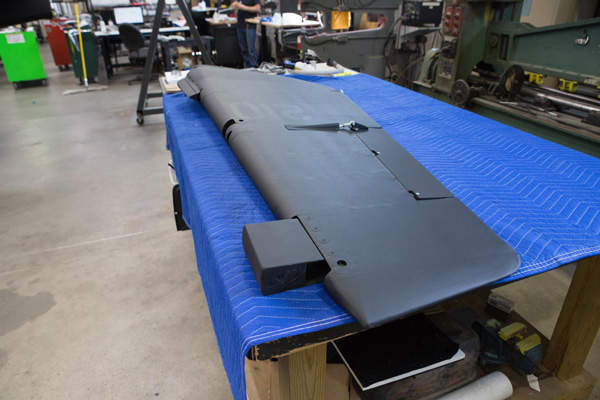
Trim tab and elevator are assembled and ready to go on.
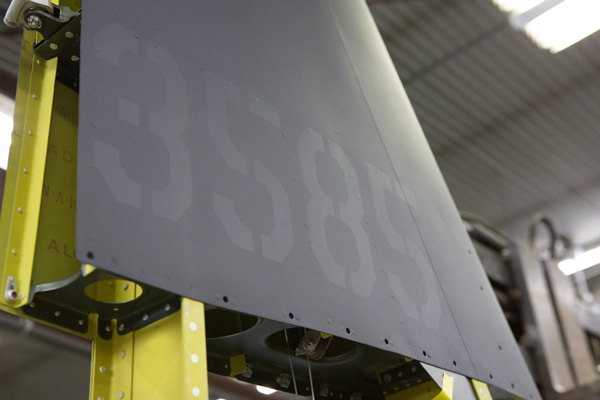
In China, the black paint would have been sprayed over the tail number. The paint over paint would display a slightly different surface than paint on aluminum so the tail number 2103585 for Lope’s Hope 3rd, 42-103585, was applied and then painted over.
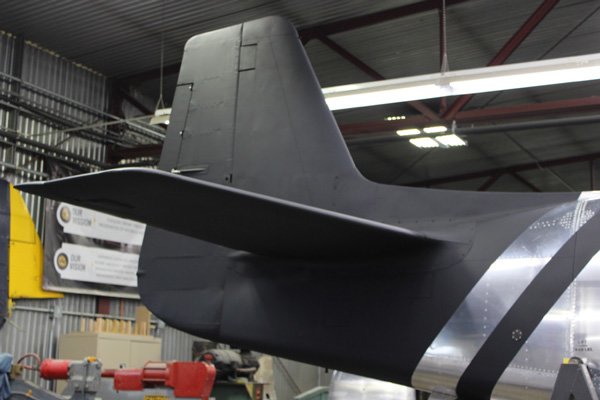
The tail surfaces, fillets, and the dorsal are assembled.
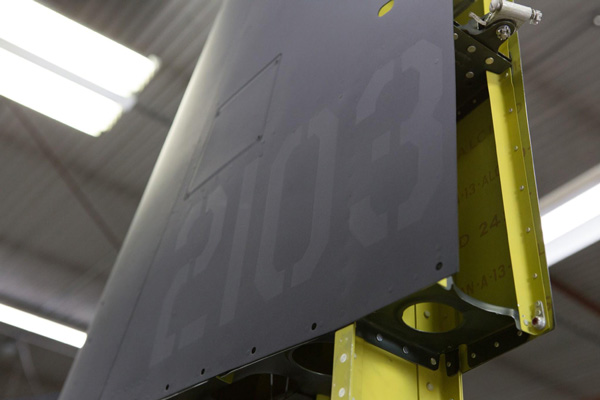
Left side view shows the first four numbers of the tail number.
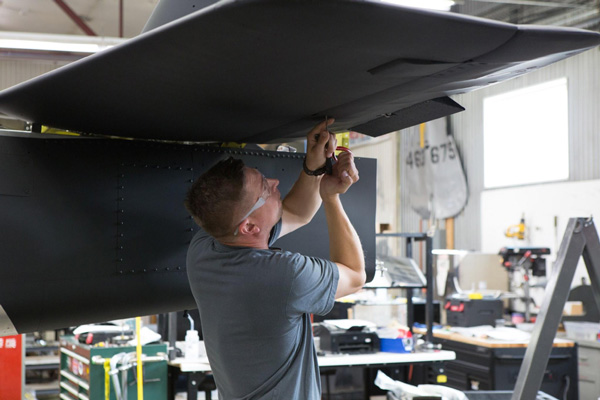
Erik works on the elevator to stabilizer assembly.
Cockpit
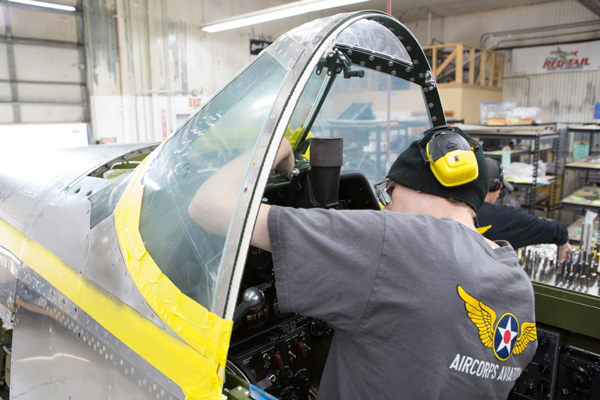
Aaron works on the gun sight.
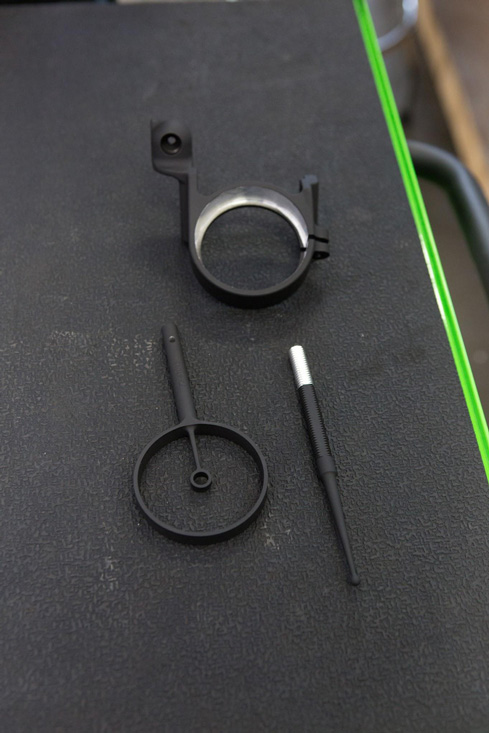
Auxiliary gun sights; the bead sight is mounted to the firewall and sticks up from the top cowl. If the bulb burned out in the optical sight, or other damage occurred, the pilot still had a way to aim his four 50 caliber guns.
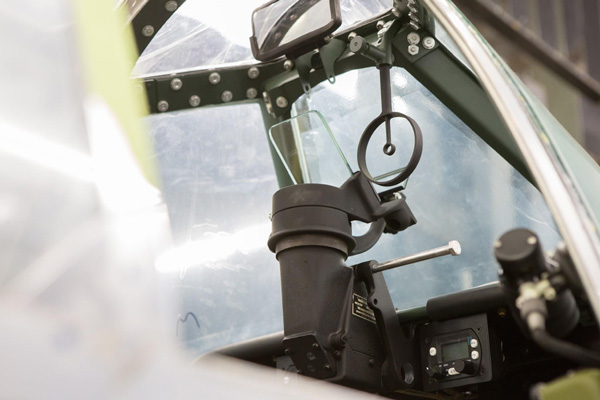
N-3C gunsight is installed as it would have been in China.
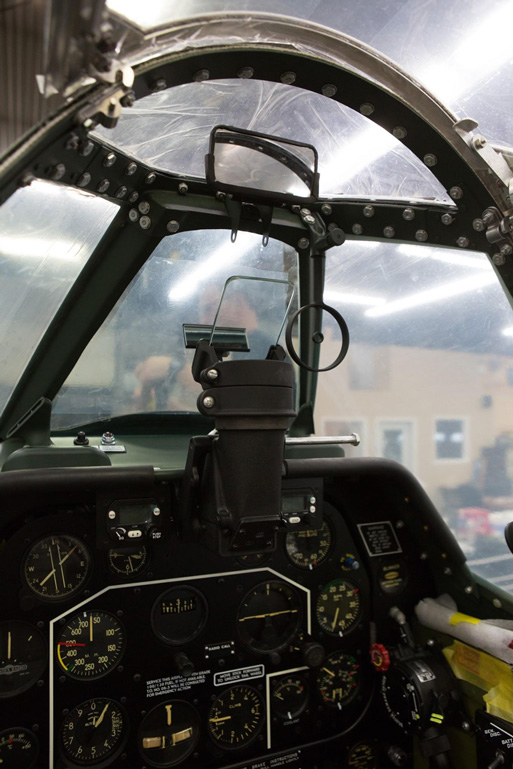
The N3-C and the back up auxiliary ring and post sight to its right.
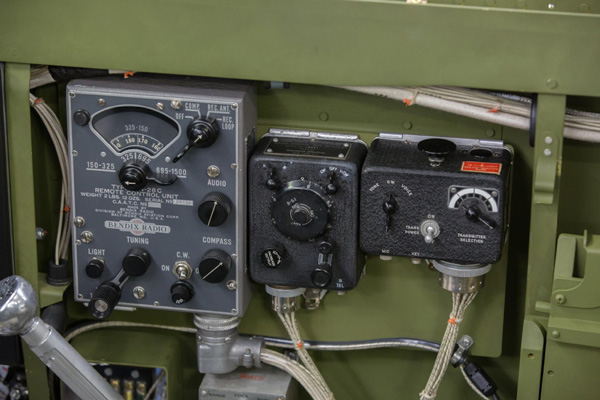
The three electronic boxes house the MN-26 radio compass controller, SCR 274 communications receiver and the transmitter.
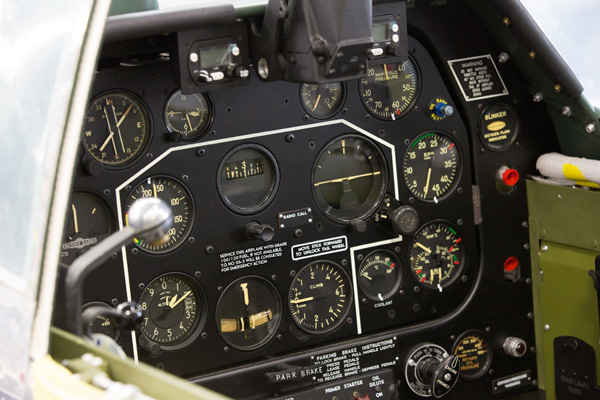
A close in view of the instrument panel shows some of the range arcs on various dials.
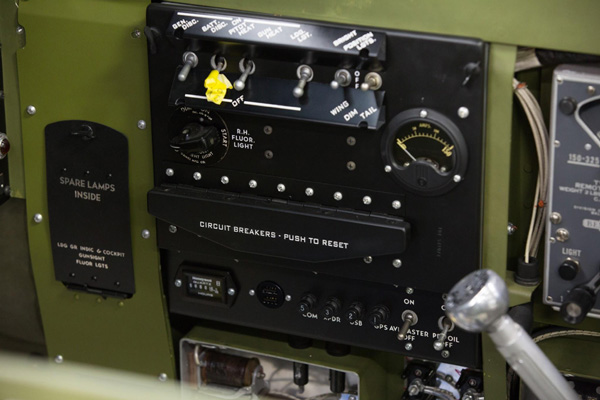
The right side switch box and spare lamp cover show up nicely.
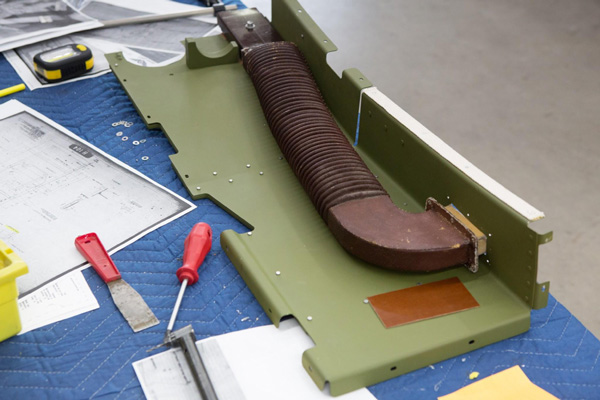
The cockpit heater hose and floorboard await installation.
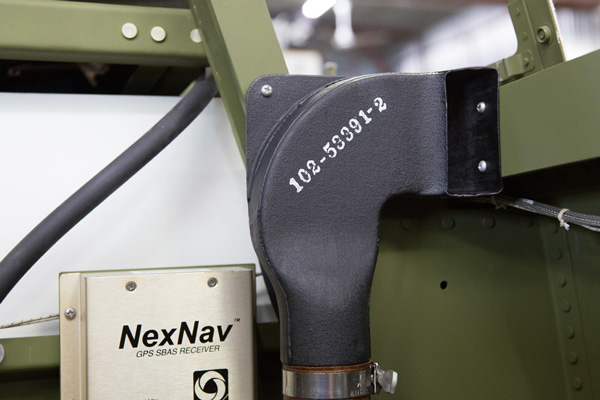
The heat and ventilation outlet is mounted.
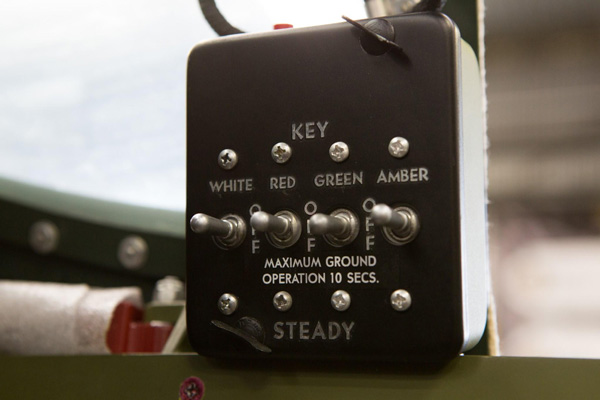
This is the recognition light control box.
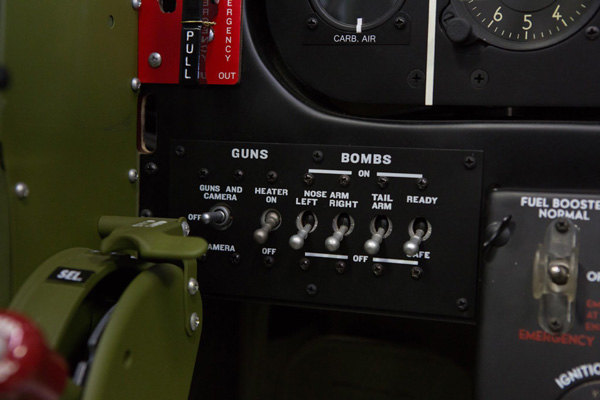
The arming switches are in the lower left corner of the panel.
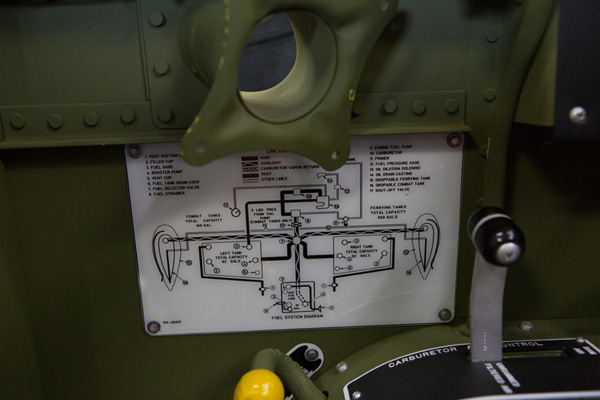
The fuel system diagram placard mounts next to the trim console.
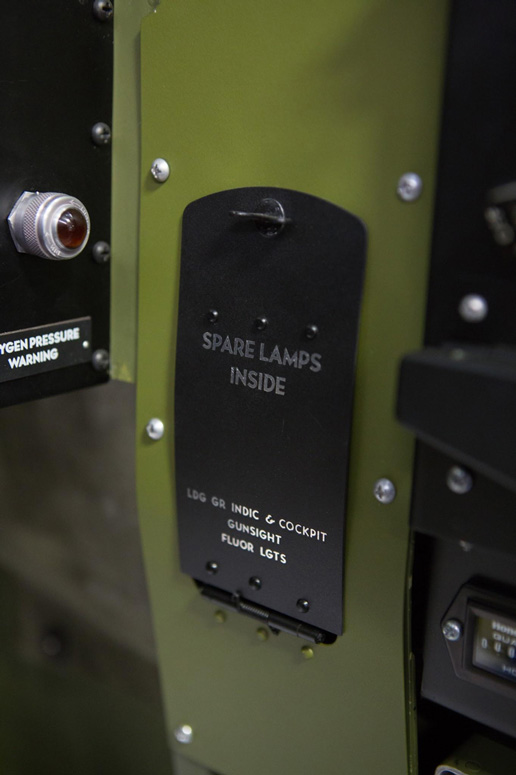
The cover door labeling is self explanatory in this image.
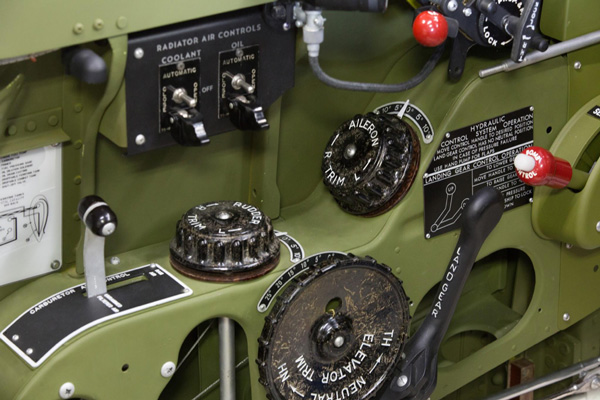
The trim console with the various trim wheels and the intake air control lever that determines whether the carburetor air is filtered or not.

The airspeed indicator shows the red line for the never exceed velocity, the yellow arc is the cautionary range and the green line is the upper end of the normal operating range for this airplane.
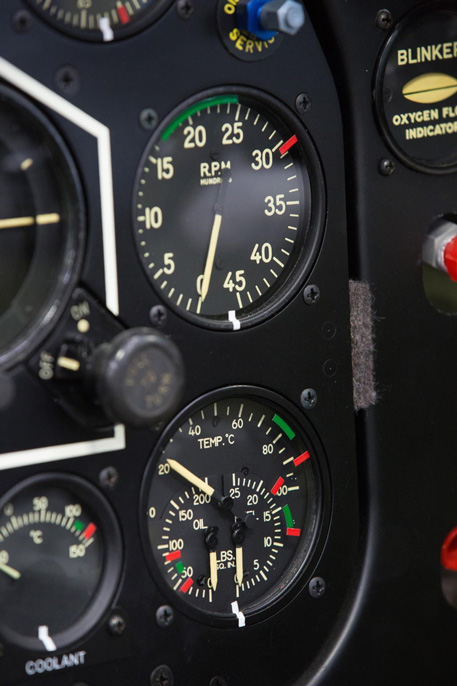
The upper gauge is the tachometer with the rpm redline and green normal operating range. The lower gauge is a three in one affair with oil temperature across the top and oil pressure on the bottom left, fuel pressure bottom right.
Controls
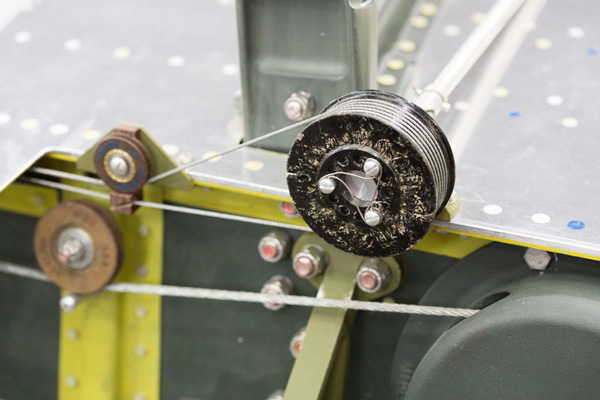
The darker wheel is the aileron trim pulley.
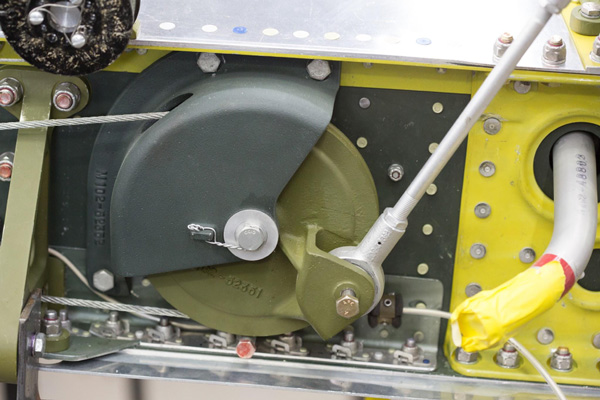
The larger cables are for the left side aileron and the small ones are trim tab cables.
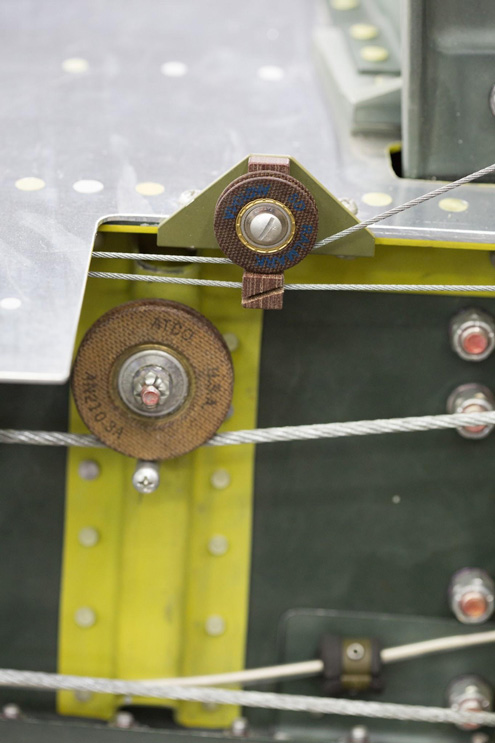
One of the aileron control system pulleys sits near the center of the wing. The rod connects to the control stick torque tube, the cables run out to another pulley at the inboard end of the left aileron.
The Big Move to the Hangar
Finally it was time to move Lope’s Hope 3rd out to our hangar for her final assembly. This is a great sign that the test flight isn’t too far off.
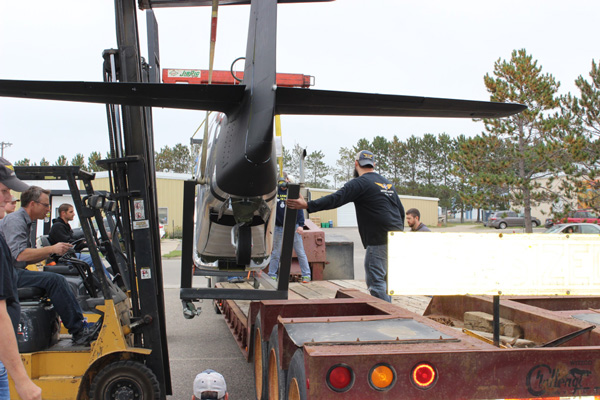
Two forklifts provide the lifting power after very carefully attaching web straps to lift.
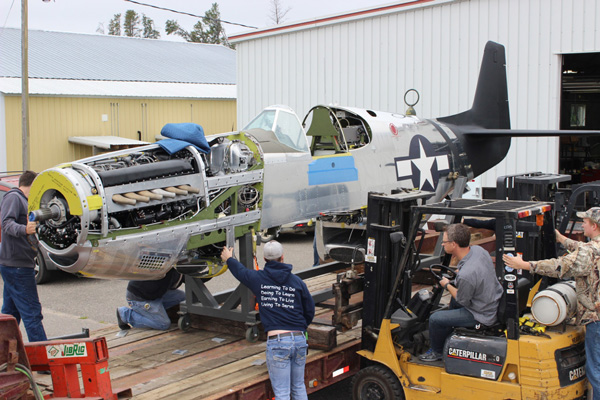
The guys align the fuselage and its rolling fixture on the flatbed.
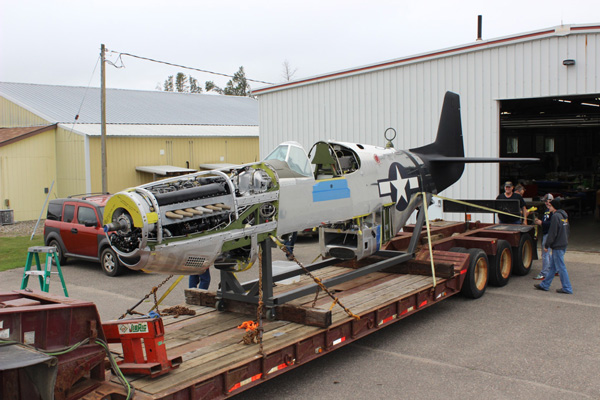
With the fuselage firmly tied down, it is time to roll.
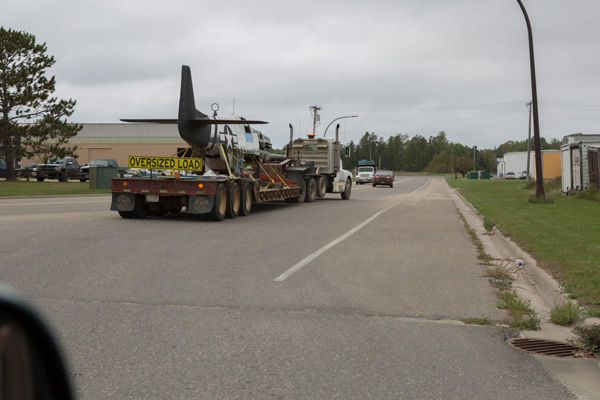
The fuselage leaves the restoration shop.
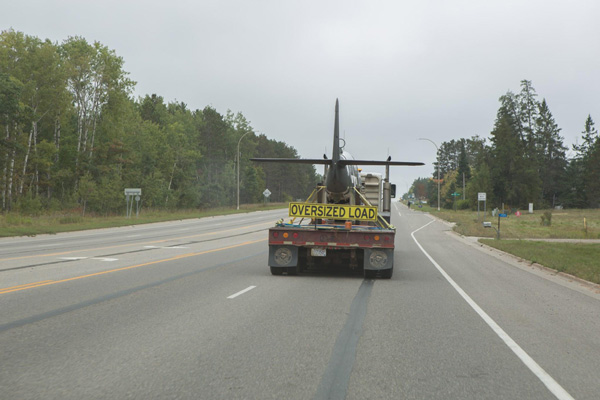
No traffic problems were encountered, thanks to the Minnesota State Highway Patrol escort.
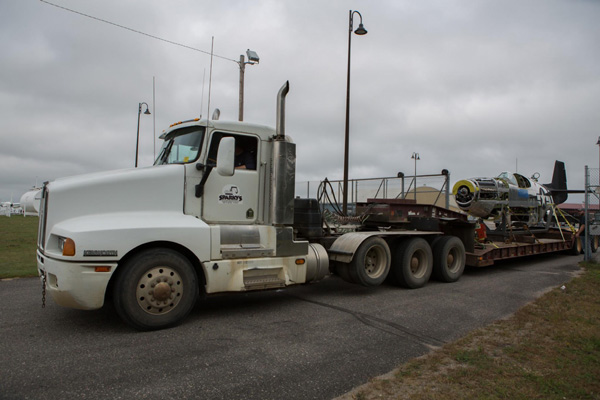
The airport security gate is a very tight fit for the width of a P-51 horizontal stabilizer.
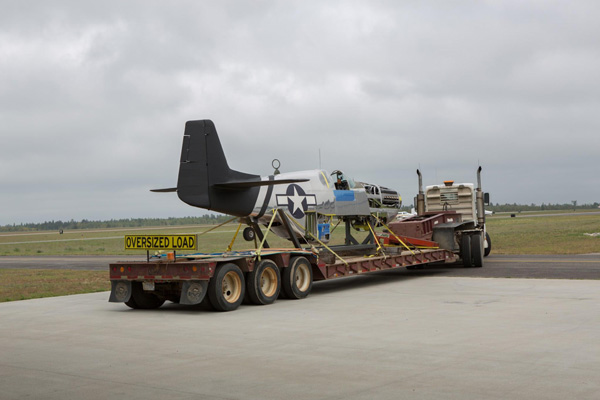
The truck driver lines up with the hangar. His grandfather flew A-20s in the Southwest Pacific.
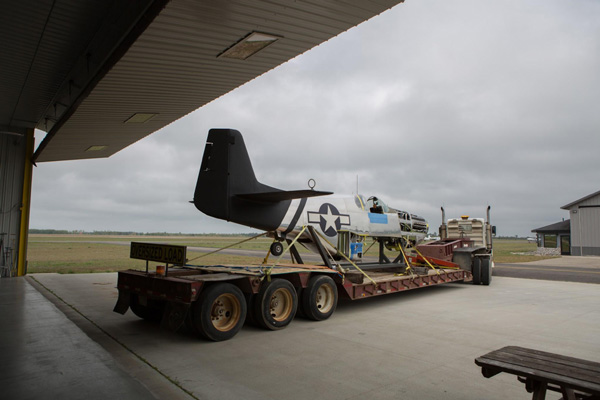
Into the hangar Lope’s Hope 3rd goes.
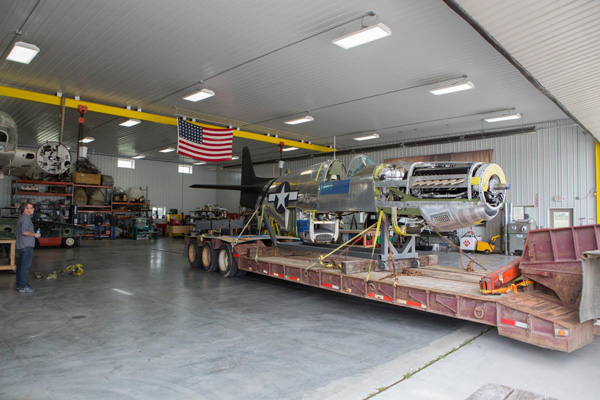
The truck backs under the lifting beam.
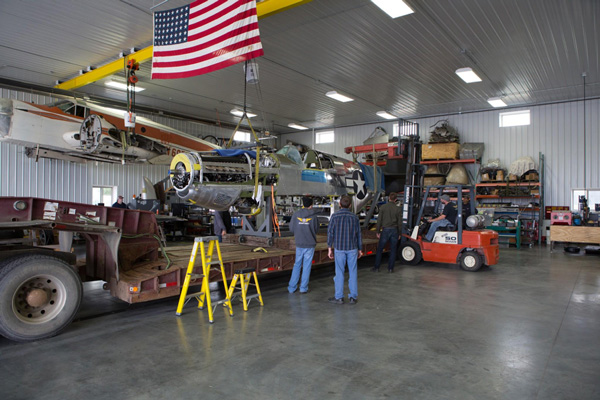
Once again the fuselage is suspended from web lifting straps. Mark and Aaron look on.
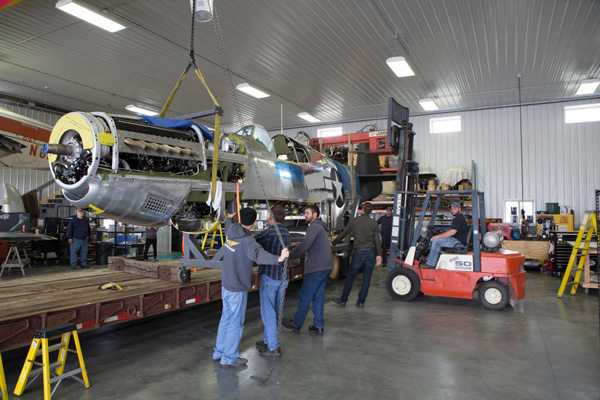
Aaron, Mark, Erik, and Denzil guide the suspended fuselage as Tye mans the forklift holding up the rear of the fuselage.
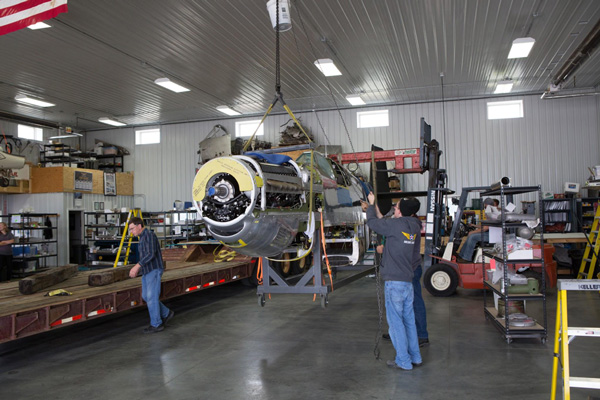
Both the chain hoist and fork lift have to lower evenly.
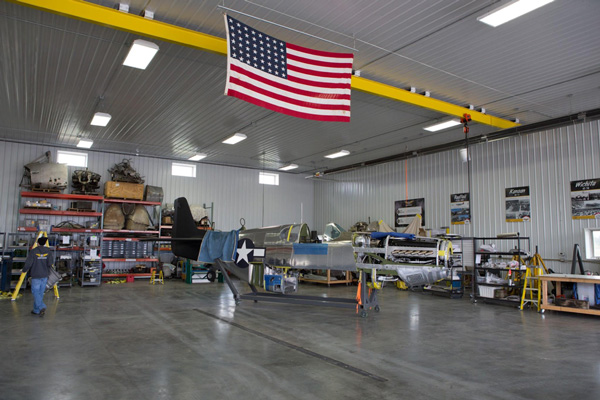
Safe on the hangar floor, the next step is to bring the wing over.
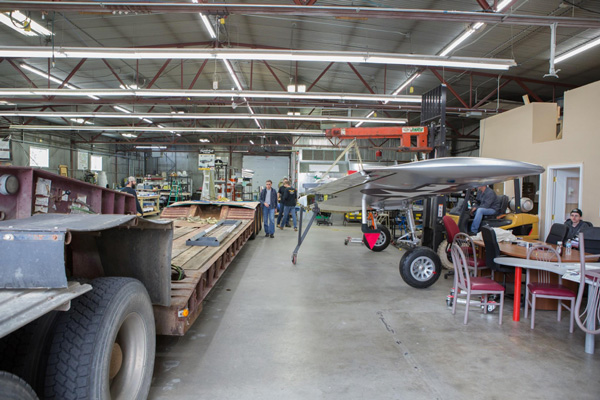
The wing is loaded at the shop.
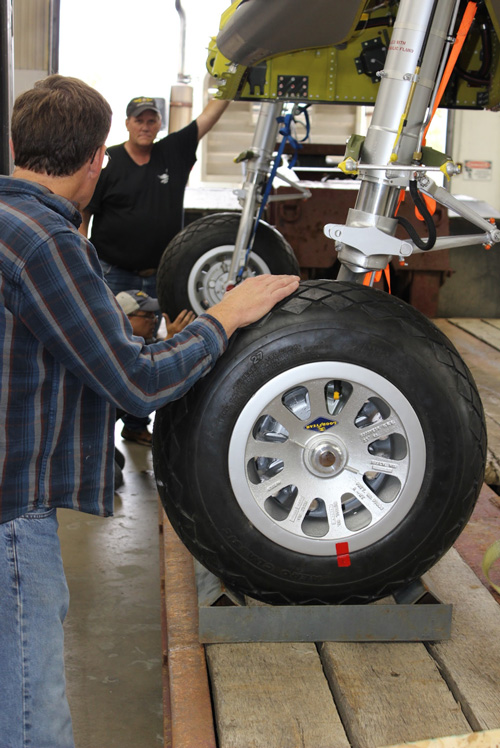
Mark and Jeff use a welded fixture lagged down to the wooden bed to keep the wheels from moving.
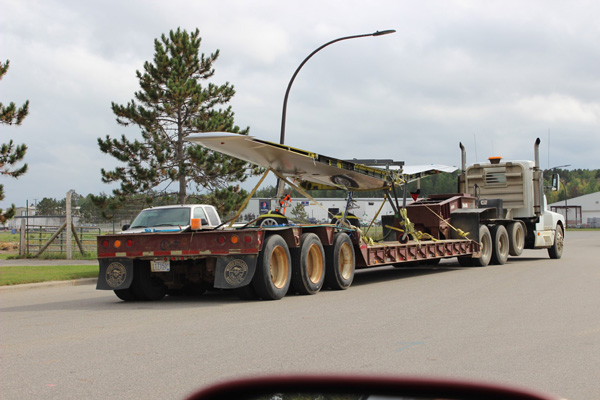
Off to the hangar goes the wing assembly.
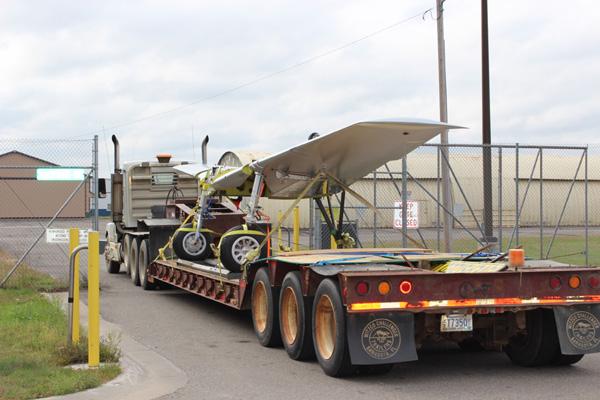
The wing goes through the gate at Bemidji Regional Airport.
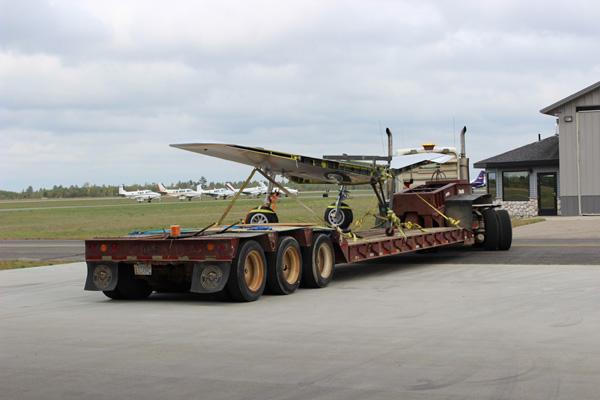
The trailer lines up with the hangar centerline once again.
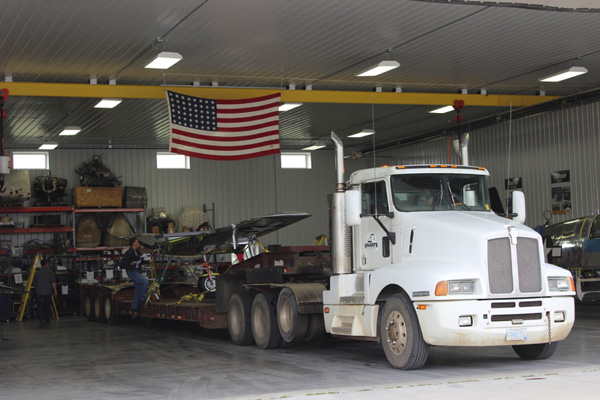
The center of the wing is situated under the lifting beam and hoist.
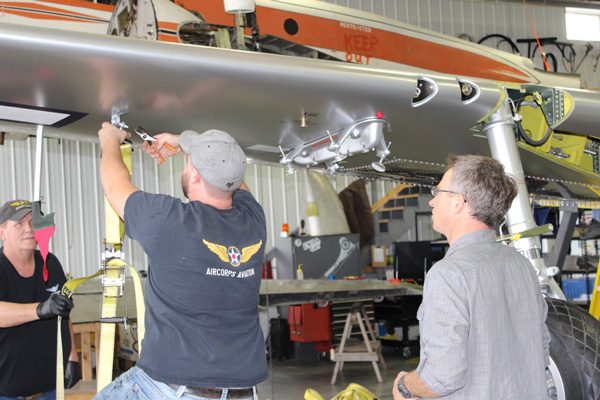
Tie down straps are undone by Tye, Jeff, and Ryan.
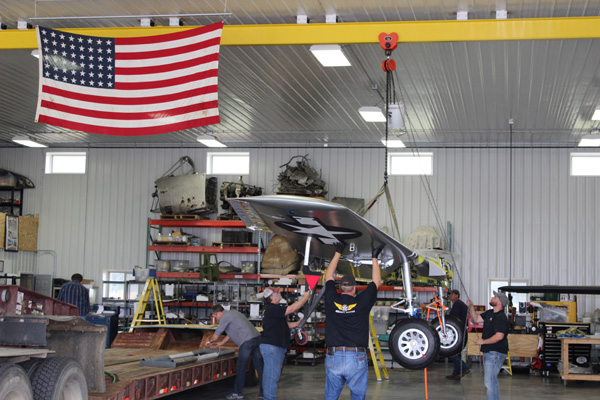
The wing is lifted complete with its rolling fixture.
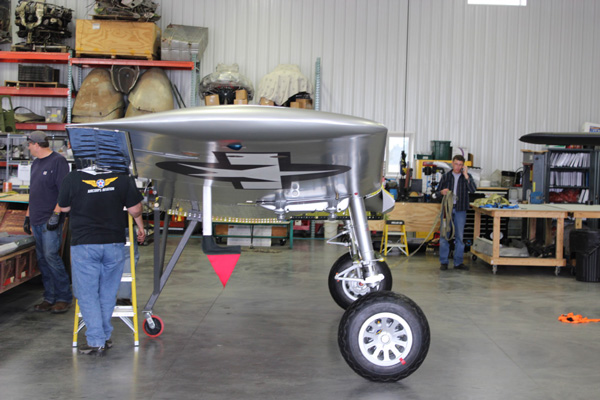
The wing is now also safe on the hangar floor.
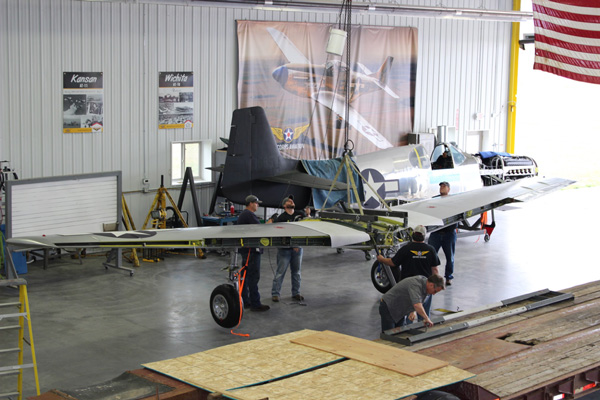
Both major parts of Lope’s Hope 3rd are reunited and ready to be assembled for the final time.
